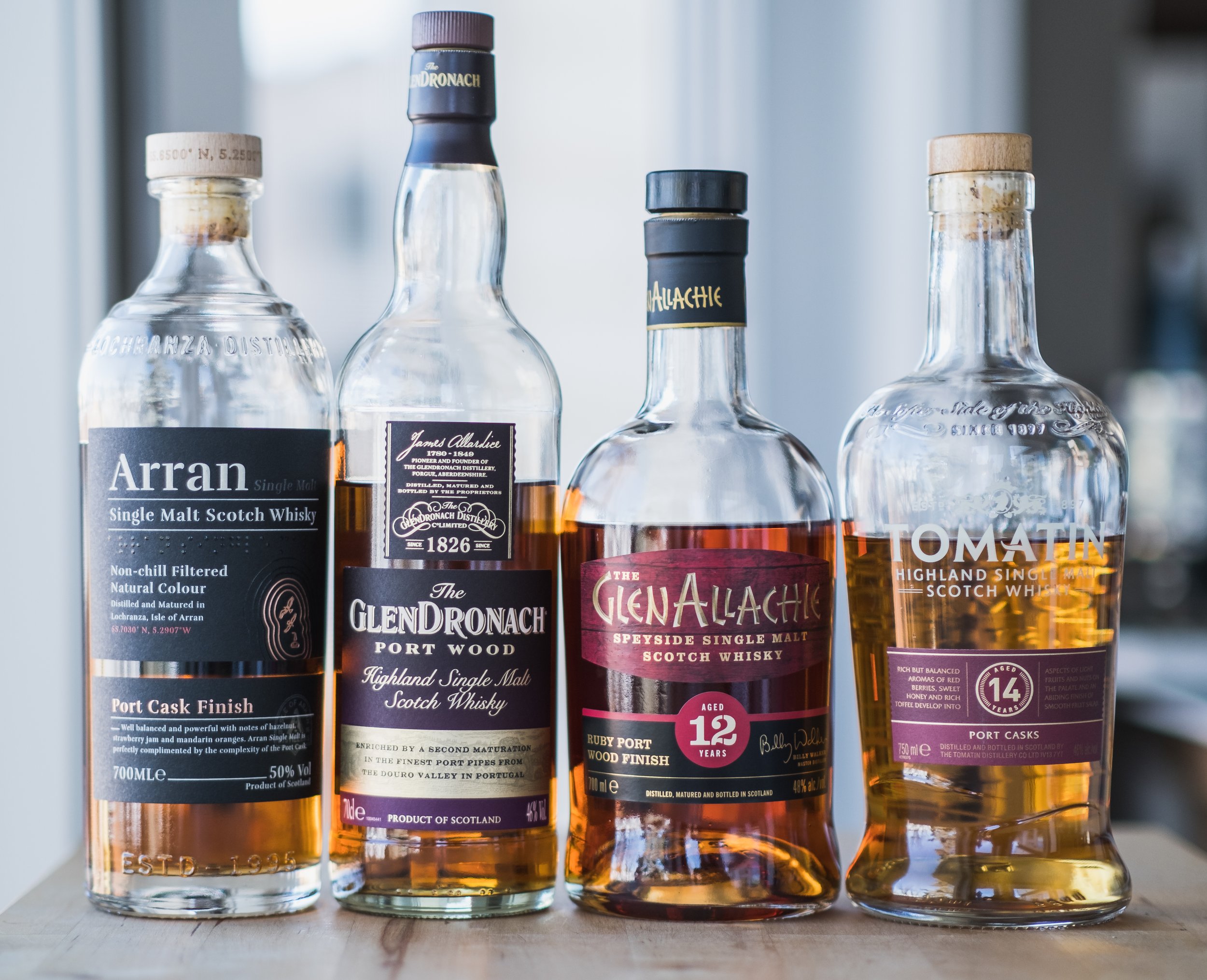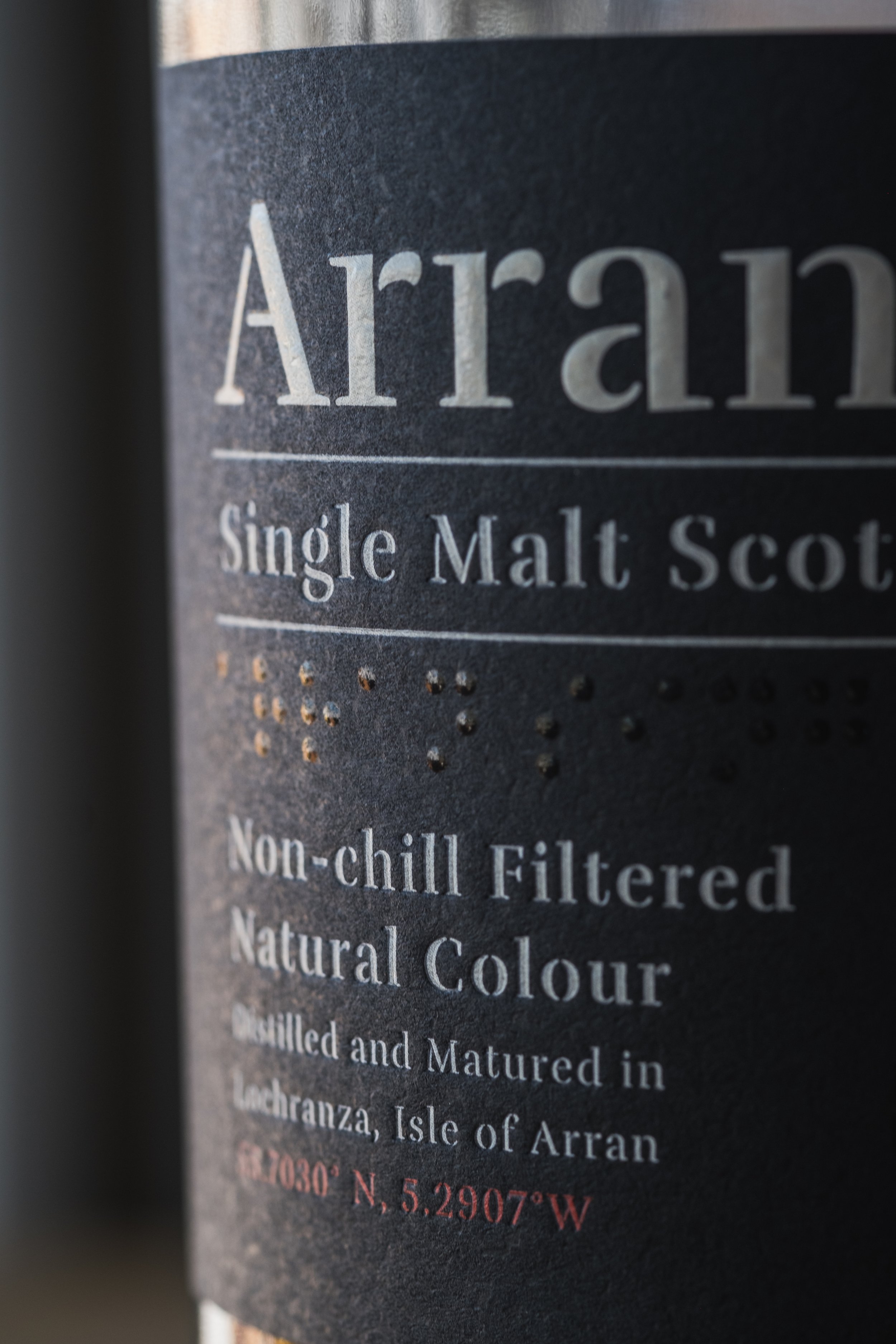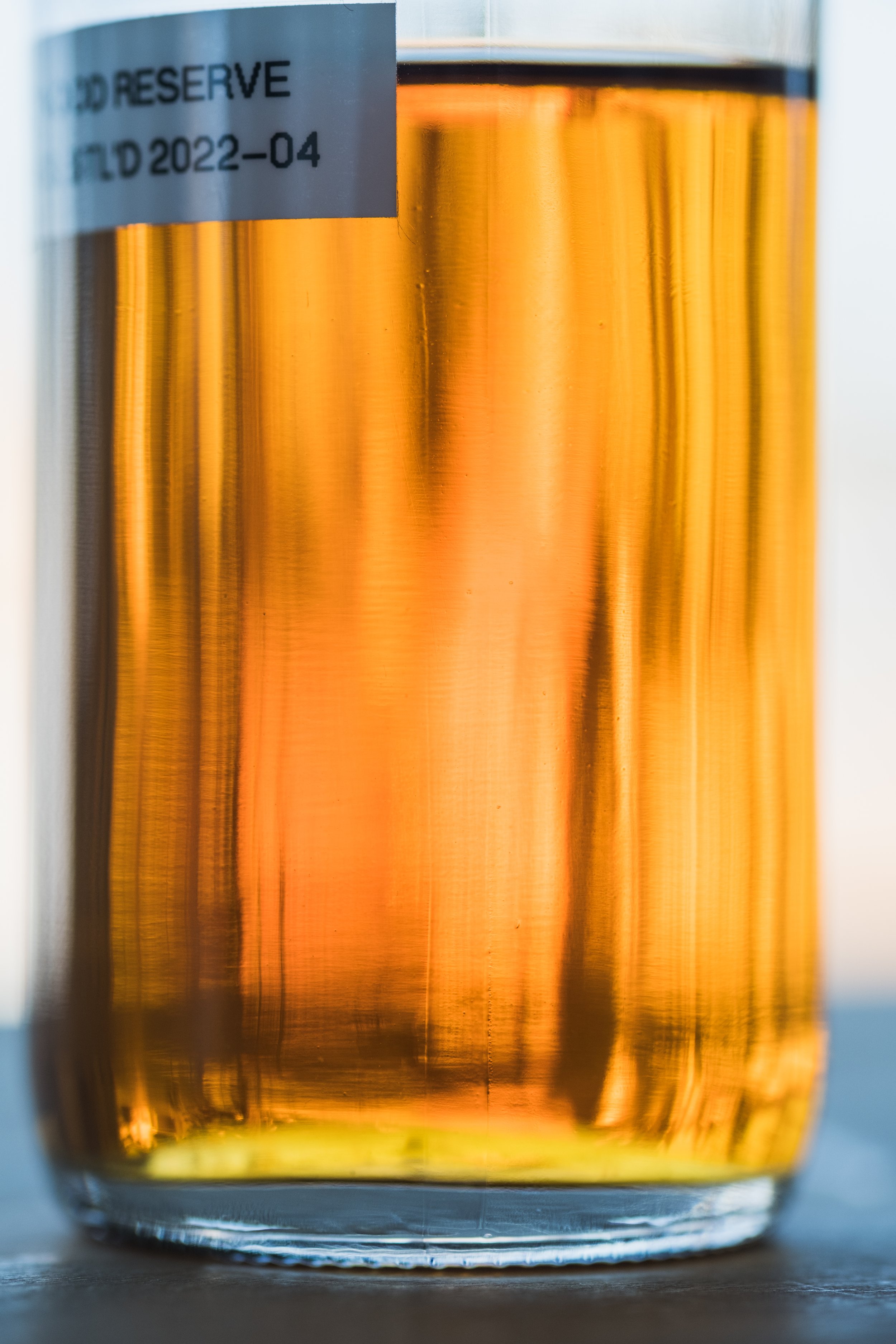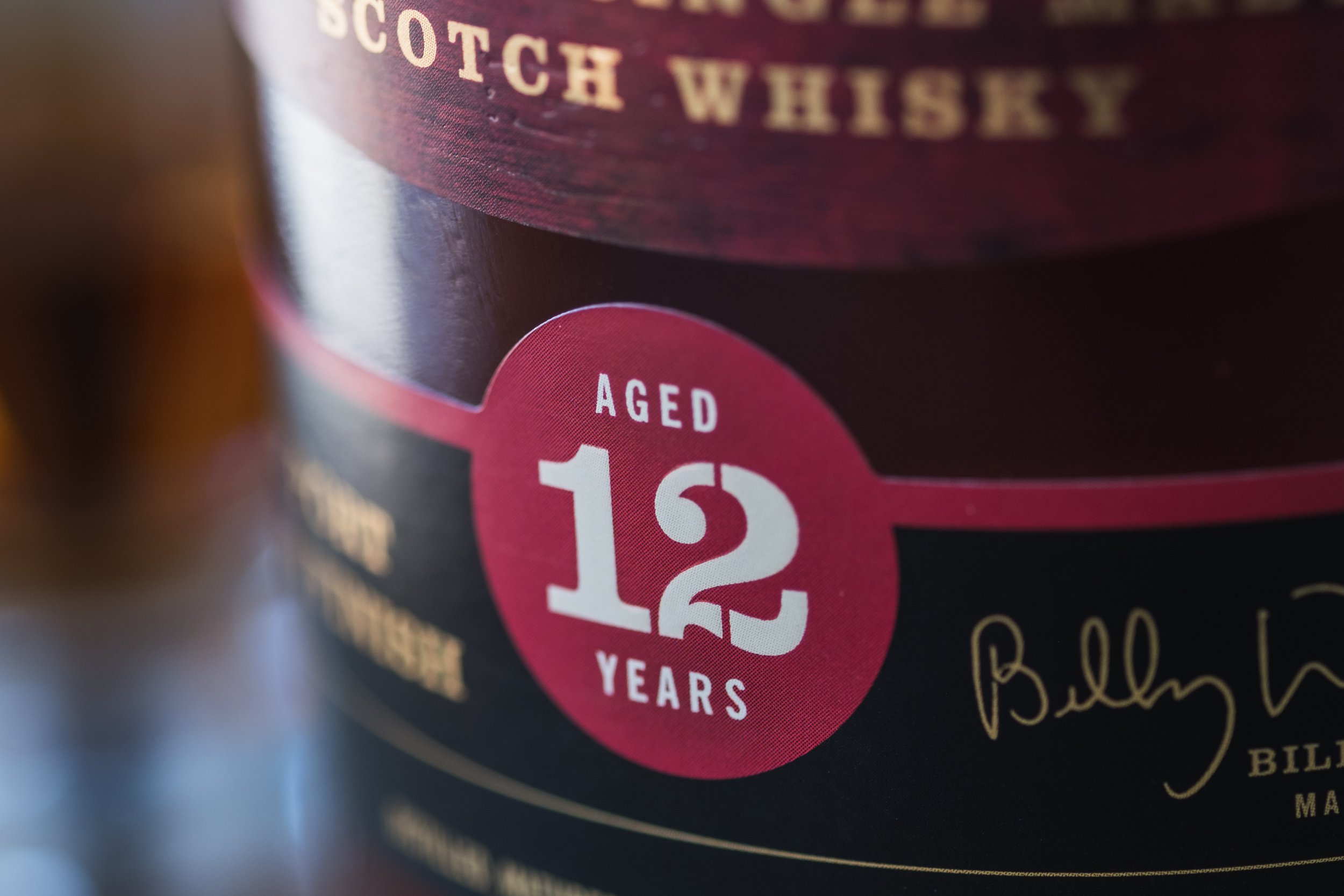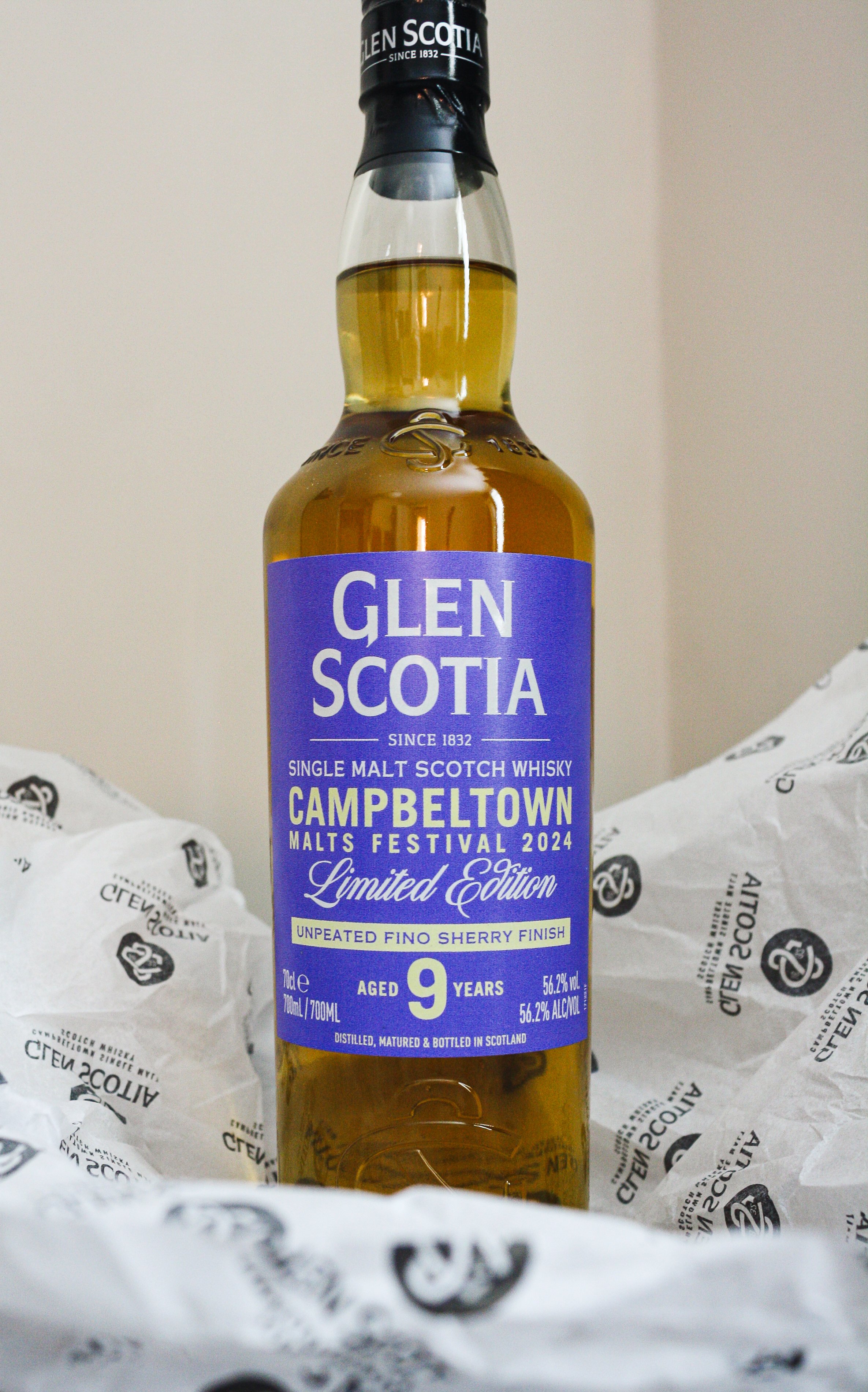Port Royale
Port Cask Quintet | Various ABV
Score: 7/10
Very Good Indeed.
TL;DR
Celebrating those who get it right
Let’s play a game of preferred flavours
What do I mean by preferred flavours? If I were to ask you to pick your favourite real-world, non-whisky flavours from the below comparisons, which would you pick?
Strawberries or plums? Raspberries or raisins? Cherries or figs? Jams/compotes or nuts?
Now I don’t know about you, but I can’t distinctly remember the last time I had a plum. What about you? Would I choose to eat a strawberry over a plum? Every single day until eternity. How about a raspberry over a raisin? Yup, give me those seed-laden juice bombs rather than the dried chewy husks of a grape.
I will admit that the choice between jams/compotes and nuts would depend on the day; it’s an even draw for my preferences. So if you picked plums, raisins, and nuts as your preferred flavours, then sherry’s influence on whisky is for you. But if you prefer the more red berry-type flavours in your daily consumption, then port’s influence should win you over.
Left to right: Arran, Glendronach, GlenAllachie, Tomatin, Dalmore
Generally speaking, the delicious baking spice, vanilla, and Christmas cake notes are imparted by the barrel wood type rather than the previous incumbents. For example, some of the typical flavours we would expect in a port-finished whisky include caramel, cinnamon and chocolate. Sounds familiar, right?
So, let me air a minor annoyance. Why are there so many sherry influenced whiskies out there rather than port, when it seems people should prefer port’s influence? Do restaurants or deserts routinely employ plums and raisins to feature inor accentuate a dish, or do they leverage strawberries and raspberries especially for desserts? I believe I know the answer for many restaurants here in North America. Personally, I’m squarely in the red berry camp. You won’t find Broddy munching on a plum at any point!
I think there is a general industry consensus that maturation in port is more difficult than in sherry, as it can apparently dominate the spirit faster and over-cask the whisky. Beyond that watercooler talk, I’m not exactly sure of the reasons. Both port and sherry are fortified wines with similar %ABV, made from grapes, and retain a significant amount of residual sugars. Both are aged in oak barrels for usually at least one year before being disgorged. Both utilise similar barrel sizes and wood types.
So why does port get a bad rap? Why are sherry bombs a chased-after commodity yet a port bomb gets sneered at?
I’ve managed to amass a not-so-insignificant collection of port-matured or -finished whiskys, including peated and unpeated malt; however, today I’m going to cover some of the most widely available official bottlings of port-influenced whiskies in an attempt to convince you to consider them.
Review 1/5
Arran Port Cask Finish, March 2022, 50% ABV
£45 (paid CAD$80)
Fully natural for the win! According to Arran’s website, the base whisky was matured for at least 8 years in American oak before a finishing period in Portuguese port barrels.
Score: 6/10
Good stuff.
TL;DR
Dark chocolate berry fondue
Nose
Dense and powerful. Strawberries. Creme brulee. Dark chocolate, cherries, and espresso powder. Earthy mustiness.
The longer this sits in the glass, the more brown sugar, dark caramel, cherries, and raspberries become prominent. Yum!
With water, vanilla pops to the forefront, followed by red berries and then milk chocolate.
Palate
Strawberry rhubarb pie, balancing the sweet strawberries with some of the slight bitterness of rhubarb. Blood orange. Dark chocolate. The crispy crème brûlée top is dusted with cocoa powder. Moderate amount of barrel tannins providing a slightly drying experience. Medium-short finish.
With water, the mouthfeel softens considerably and the flavour volume dial has been turned down to 8 but all of the above notes remain.
The Dregs
In my opinion, the nose benefits from water, while the palate works slightly better at bottled strength. My overall preference would be to add a dash of water, sit back, and enjoy. The price is right, the flavour is good without detractions, and this release from Arran could be a good unobtrusive, average start to someone’s port cask journey. This bottle does improve with time spent open, so do yourself a favour and crack it open, drink a few drams with some friends, and then let it sit. The next time you come back to it, you’ll appreciate it even more!
Score: 6/10
Review 2/5
Dalmore Port Wood Reserve, 2022, L0240, P/012898 code, 46.5% ABV
£69 (paid CAD$88)
I purchased this in August 2021 and bottled myself a time capsule of a sample in April 2022. Such samples serve as amazing little morsels to indulge yourself with in the future, when you wish to take a trip down memory lane or you think your palate might have matured further.
Score: 4/10
Some promise.
TL;DR
A dollop of jam in water
Nose
Soft and unobtrusive. Raspberry and strawberry jam. Touch of caramel. Fruit roll-up/leather.
Palate
Red berry jam, cocoa powder, a dash of cinnamon, a few drops of blood orange. Looking at my notes from 12 months ago, I wrote, “muted.”
The Dregs
Again, looking at my notes from 12 months ago, I’ve written “velvety and one-dimensional,” and that pretty much sums up my experience here again after cracking my sample. The nose is very good, promising a full-flavoured and refined whisky, but the palate is thin, weak, and a let-down. It does present as velvety, however (soft and gentle in this case, not oily, viscous, sticky, watery, or smooth). The finish is, well, lacking in any sort of finish. It’s there one second then gone the next. It’s a complete surprise for the %ABV; I was expecting something more. When drinking this Dalmore side-by-side with the Glendronach, something which I found was quite lacking on the palate (spoiler), this Dalmore is positively like water. Given the price point and the ever-increasing Dalmore prices in my area, it gets a full point docked off. There are so many better options out there.
Score: 4/10
Review 3/5
GlenAllachie 12yo Ruby Port Finish, 2021, 48% ABV
£63 (paid CAD$100)
The box states “fully natural,” but those keywords have been neglected on the bottle label. That’s too bad.
Score: 7/10
Very good indeed.
TL;DR
A fully-loaded spice cake
Nose
Dark and warm. Brown sugar, dark caramel, cherries, and blackberries. Ginger and honeycomb. Small dash of vanilla.
Palate
Dark spice cake loaf dotted with small chunks of cherries, walnuts, bananas, and candied ginger, and garnished with the zest of an orange. Creamy vanilla and a touch of milk chocolate. A musty note is here, similar to the Arran.
The Dregs
I’ll be straight with you. I’m not a GlenAllachie fanboy. I like a bit of whisky spirit balanced with my cask, and the recent releases from GlenAllachie have been quite heavy handed with the cask influence. So heading into this Ruby Port expression, I was preparing for port wine at a whisky proof — but I was very pleasantly disappointed. Everything was in balance. The spice, the fruit, the sweetness, and the bitter components were all working in harmony. Well done, GlenAllachie!
Score: 7/10
Review 4/5
Glendronach Port Cask Finish, July 2021, 46% ABV
£60 (paid CAD$140)
Score: 5/10
Average.
TL;DR
Nose it but don’t drink it
Nose
Dark chocolate and cherries. Terry’s Chocolate Orange. Blackberry jam. Ginger and cinnamon. Cardamom and black tea. It’s sumptuous and complex, and it consistently jumps out of your glass.
Palate
Thin, soft, and hollow. Cherries and blackberries. 85% cocoa dark chocolate. Angostura bitters in an Old Fashioned cocktail. Hint of orange citrus.
The Dregs
This is a perfect example of a whisky that is engineered to produce an exceptional nose while sacrificing the quality of the palate. It’s like the palate has been neutered, leaving behind a thin skeletal frame that hints at what could have been.
For the price I paid for this whisky, the palate experience is ludicrous, and I’ve subtracted a full point. Now looking at Master of Malt, it looks like there are significant differences in local prices, and this might influence your purchasing decisions. Regardless of the value proposition, I’m recommending being wary of the nose vs. palate difference. This is my second bottle from Glendronach; I bought this bottle to feature in this review but has a 2021 bottling date (tells you how fast they’re flying off the shelves here). Over the past three years and likely different bottling dates and batches, my notes are very similar. Maybe the UK £60-ish price point is more in line with your spending inclinations, and thus the score of 6/10 might be better for you. That being said, I still think there are better alternatives out there.
Score: 5/10
Review 5/5
Tomatin 14yo Port Cask, August 2019 bottling, 46% ABV
£55 (paid CAD$125)
According to Tomatin’s website, the Tawny Port finish was completed in barrels that previously held port for 50 years. We don’t have any idea if those barrels were first-fill, second-fill, or a combination of both. But you can probably surmise the cask makeup based on my notes below!
Score: 7/10
Very good indeed.
TL;DR
Well-aged Tomatin with a dash of port influence
Nose
Fruit cups from your childhood. Tinned peaches and syrup. Healthy dash of vanilla that accentuates the fruits. Small hint of raspberry syrup and caramel. There is also a baking spice-type note, but it’s mild and unobtrusive enough that I can’t put my finger on it.
This is sweeter, brighter, and more rounded than the other port finished whiskies on trial here.
Palate
Oh my. Honey, caramel red apples, strawberry and blackberry compote/jam, cinnamon. There is a touch of oaky, tannic dryness.
The finish is long, soft, and decadent featuring a trailing diminuendo of the palate notes. The retronasal experience is phenomenal, featuring a red berry, honey dew melon, and cinnamon compote.
The Dregs
It’s been at least six months since I’ve cracked this one. Such is the problem of having too many whiskies to try (that’s not a problem, btw) and not wanting to drain a bottle you like. I bought this bottle almost two years ago at a bargain compared to the prices I’m paying these days, hence my unwillingness to feature this beautifully elegant whisky in my drinking rotation all that often. But now that I put this Tomatin against the others here, I’m reminded of why I enjoy it so much. It’s integrated, rounded, and complex enough to warrant me putting it at the back of the shelves. The port influence is done with a light hand, and Tomatin’s spirit (peaches and melon) can still be found. I would wager a significant portion of second fill port barrels were used here, and I absolutely love it.
Score: 7/10
The Tomatin is a port finish done right. If you’ve made it this far and are considering buying a port-finished whisky to try, please start with the Tomatin. If you are a little more cost conscious, then start with the Arran, however the port influence there is a little more heavy handed and traditional.
The keen eye will have noticed I’ve not included Glenmorangie’s Quinta Ruban, a 14yo port-finished release. I’ve previously downed a bottle of it, but I didn’t have any on hand for this review. From my recollection, I believe the Glenmorangie to be a hybrid of the Tomatin and Arran but with much more barrel spiciness. It appeared out of balance as a result, something that I did not overly enjoy. That being said, I didn’t have it on hand to try alongside the others, so take my comments with a large grain of salt.
To come back to an earlier point: the consensus is that maturation in port is more difficult than sherry. Given the wide variation in the experience and quality of these five official bottlings, you might think this was the case. However, there are far more releases featuring sherry than port, so perhaps it is easier for us to think about all the great sherried whiskies we’ve tried than of the dank, sulfury, poor quality ones. I could easily think of many sherried whiskies ranging from 4/10 to 8/10, covering the spread of port finished whiskies on display today. So I would wager that there is significant variation in both fortified wine maturations, and port might be getting some unfair backlash.
Please give a port-finished whisky a try. At the very least, it will be a chance to stretch your palate, and you just might find a new favourite to keep on your shelf.
Tried this? Share your thoughts in the comments below. BB
-
Dramface is free.
Its fierce independence and community-focused content is funded by that same community. We don’t do ads, sponsorships or paid-for content. If you like what we do you can support us by becoming a Dramface member for the price of a magazine.
However, if you’ve found a particular article valuable, you also have the option to make a direct donation to the writer, here: buy me a dram - you’d make their day. Thank you.
For more on Dramface and our funding read our about page here.
Other opinions on this:
Got a link to a reliable review? Tell us.

